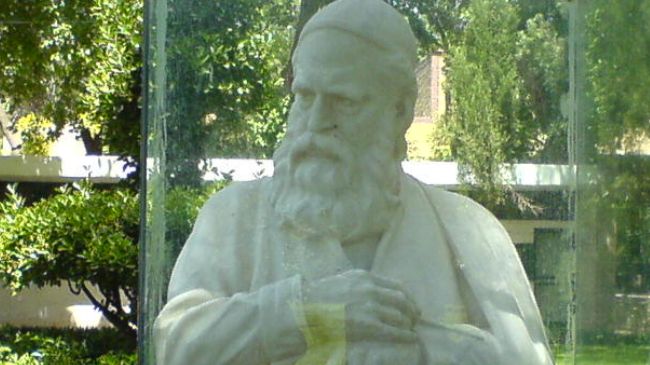 A statue of the internationally celebrated Persian poet, astronomer and mathematician, Omar Khayyam Neishaburi is slated to be set up in Manhattan, New York City.
A statue of the internationally celebrated Persian poet, astronomer and mathematician, Omar Khayyam Neishaburi is slated to be set up in Manhattan, New York City.
The officials of Manhattan municipality decided to install the statue of the classic Iranian poet as a Persian symbol in the city.
The two-meter tall statue along with two other copies was created by the Iranian sculptor Hossein Fakhimi.
“I have conducted two years of studies before starting the carving of the statues, since it was important for me to know different aspects of Khayyam’s character,” Fakhimi stated.
The two other copies are scheduled to stand in Khayyam’s hometown of Neishabur in Iran and in Florence, Italy.
In paying tribute to the poet Khayyam, the poet’s statue had been earlier unveiled in Complutense University in Madrid, Spain.
Born in Neishabur, May 18, 1048, Khayyam is recognized worldwide as one of the most wildly acclaimed Persian poets and astronomers.
He was popularized in the West through the translation of his magnum opus Rubaiyat.
Khayyam's fame as a poet has caused some to ignore his scientific achievements, which are significant.
His contributions to mathematical include his Treatise on Demonstration of Problems of Algebra, which gives a geometric method for solving cubic equations by allowing a hyperbola to intersect a circle.
Khayyam was also the chief contributor to the Jalali calendar, an ancestor of the current Iranian calendar. It is believed to have been introduced on March 15, 1079 by Seljuk Sultan Jalal al-Din Malik Shah I, based on Khayyam's recommendations.
In Persian speaking countries, Khayyam has had an impact on literature and societies through the translation of his works and popularization by other scholars.
Among English-speaking countries Scholars; Edward FitzGerald (1809-83), who was the most influential, introduced Khayyam to the West through translation of his quatrains.
By Press TV
The Iran Project is not responsible for the content of quoted articles.

 QR code
QR code